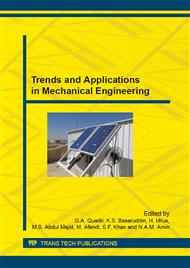p.161
p.166
p.174
p.181
p.188
p.193
p.199
p.205
p.210
Effect of Porosity on Circle Grid Perforated Plate Performance as a Static Mixer in Laminar Flow
Abstract:
Mixing is one of the important processes to the many industries. Fluid mixing process typically involves three phases of fluid in the form of liquids, gases and solids. To obtain a desired type of mixing, one of the devices that can be use is a static mixer. In this study, a perforated plate static mixer with circle grid fractal design with two grades of porosity which are 50% and 75% will introduce. The purpose of implementing the two grades porosity of perforated plate in this study is to determine a performance of the two static mixers. In order to achieve the objective, the simulations of mixing fluid were carried out by using ANSYS CFX software. The simulation was carrying out primarily in cylindrical pipe with insertions of circle grid perforated plate. Three levels of laminar flow had been used which is Reynolds numbers (Re) equal to 100, 200 and 400. The performance of circle grid perforated plate static mixer will be evaluated by determining the Coefficient of Variation (COV). The simulation results also were compared in term of homogeneity level of mixing fluids to the Kenics static mixer. Based on the simulation results, the value of COV at selected plane in pipeline simulated for Kenics static mixer and the two grades porosity of perforated plate at Re = 400 are 0.000703, 0.0247and 0.00427 respectively. Since the values of COV between 0.01 and 0.05 are a reasonable target for many industry applications, the results for new approach of static mixer represent completely homogeneous mixing fluid for this application. Definitely this new approach of circle grid perforated plate with fractal design gave better results because of lower number of inserts and simple design of static mixer.
Info:
Periodical:
Pages:
188-192
Citation:
Online since:
August 2015
Authors:
Keywords:
Price:
Сopyright:
© 2015 Trans Tech Publications Ltd. All Rights Reserved
Share:
Citation:


